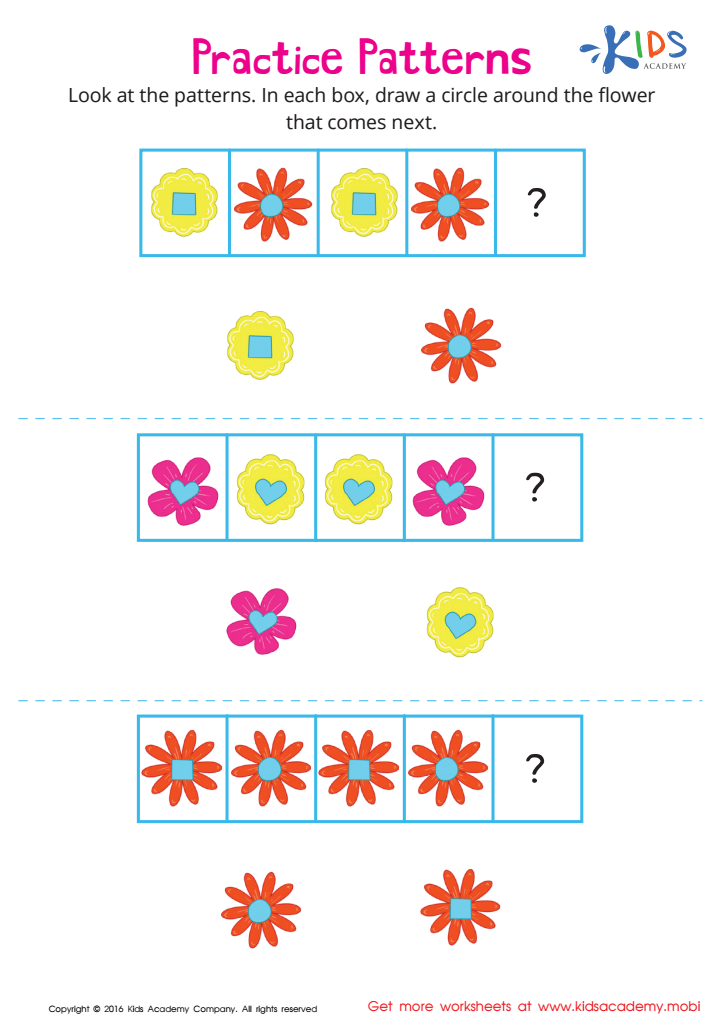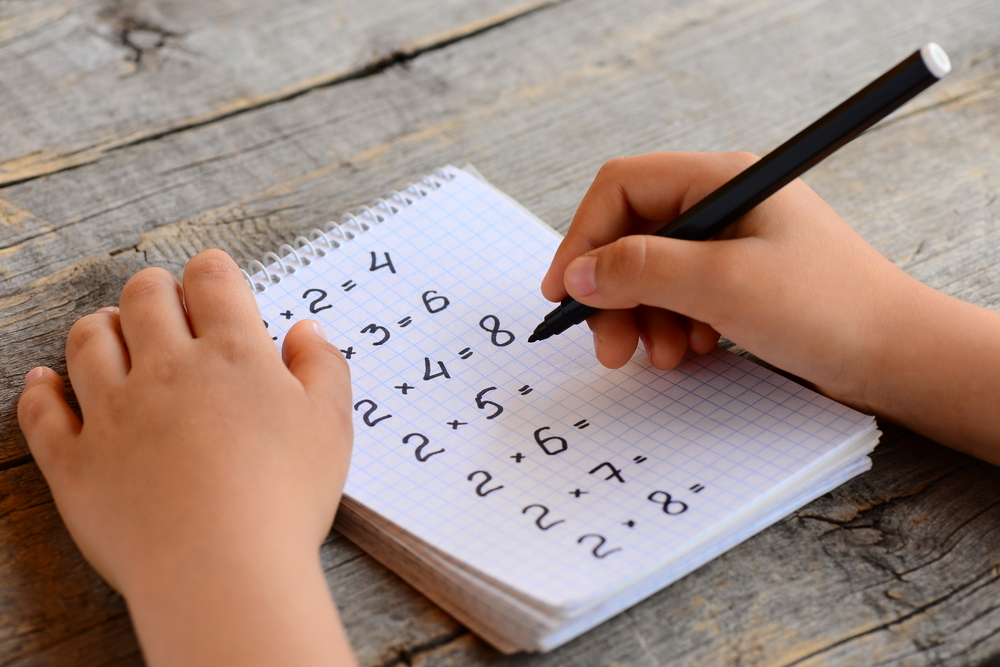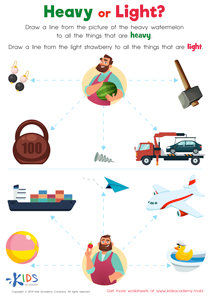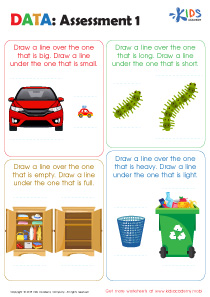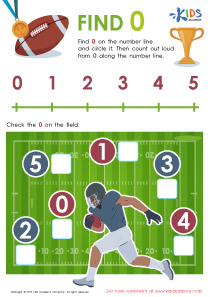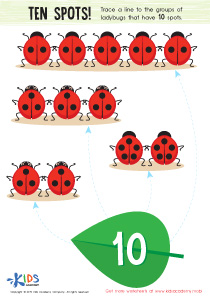Normal Patterns Worksheets for Ages 3-6
5 filtered results
-
From - To
Discover our "Normal Patterns Worksheets for Ages 3-6" designed to lay the foundation for early math skills. These engaging, printable worksheets introduce young learners to basic pattern recognition and sequencing. Through fun, colorful activities, children will learn to identify, continue, and create patterns using familiar objects and shapes. Perfect for preschoolers and kindergarteners, these worksheets help develop critical thinking, problem-solving, and fine motor skills. Boost your child’s confidence and prepare them for future math success with these interactive, age-appropriate resources. Download, print, and watch your little one enjoy their learning journey!
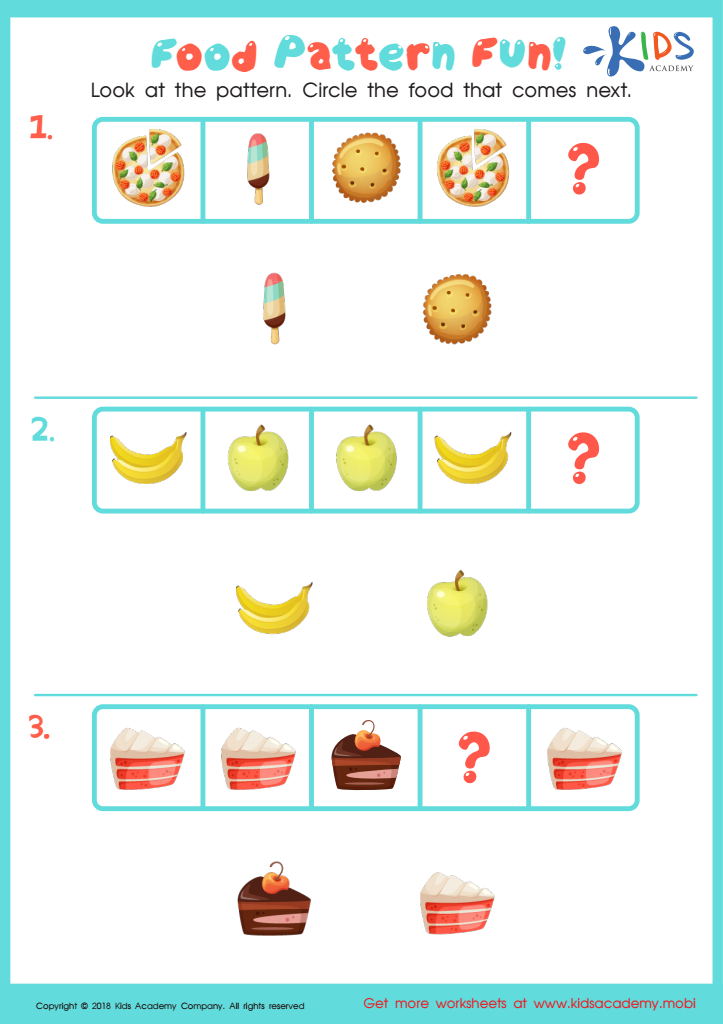

Food Pattern Fun Worksheet
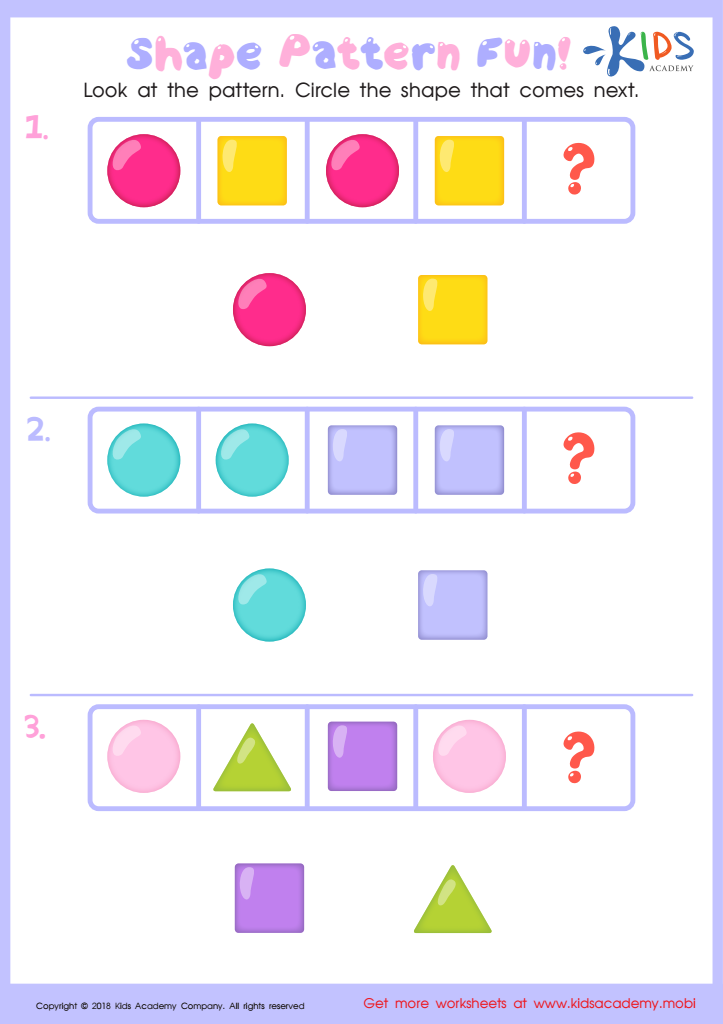

Shape Pattern Fun Worksheet
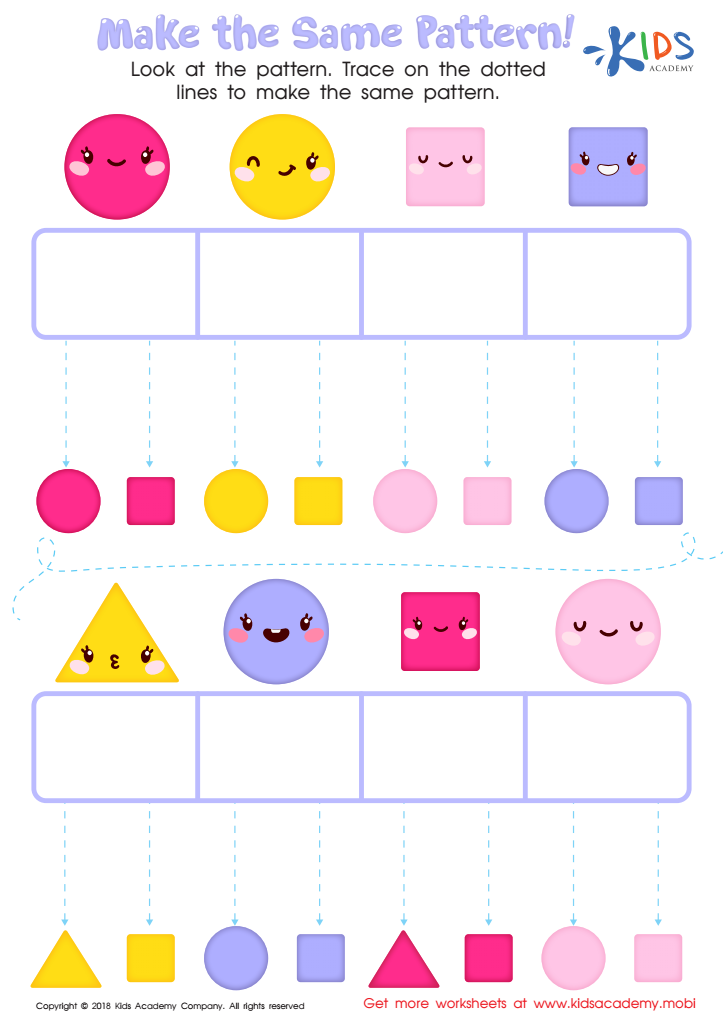

Make the Same Pattern Worksheet
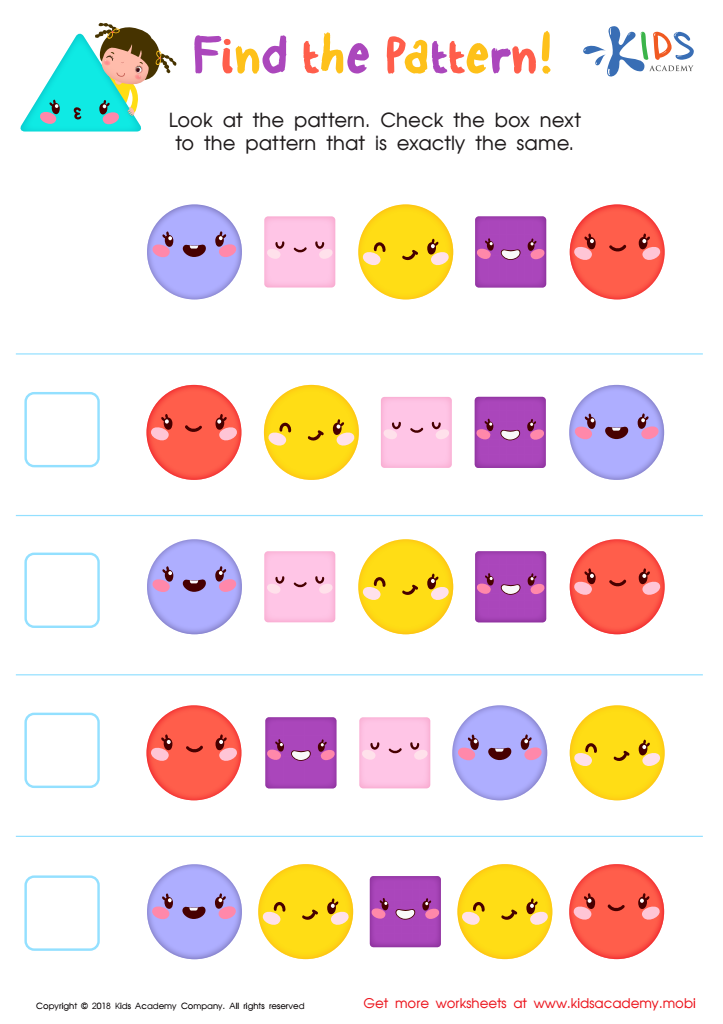

Find the Pattern Worksheet
Understanding normal developmental patterns for children aged 3-6 is crucial for parents and teachers for several reasons. Firstly, knowing these patterns helps in monitoring a child's growth and progress. Children develop at their own pace, but there are established milestones in physical, cognitive, emotional, and social areas that most children typically reach within this age range. Recognizing these milestones can alert adults to potential developmental delays or issues early on, which can be addressed through timely interventions.
Secondly, this knowledge aids in creating an age-appropriate learning environment. For instance, children in this age group typically develop increased motor skills, improved language abilities, and refined emotional expression. Aligning activities and educational content with these developmental stages ensures that children are not overwhelmed or under-stimulated.
Also, children often exhibit specific behaviors and learning styles characteristic of their age group. For example, 3-year-olds are usually in the stage of parallel play, while 5-year-olds start engaging in more cooperative play. Understanding these patterns allows parents and teachers to facilitate appropriate social interactions and guide children through important peer relationships.
Lastly, comprehensive knowledge of these patterns promotes patience and empathy. Realizing that behaviors like tantrums or short attention spans are typical at certain ages can help adults respond more calmly and supportively.
In summary, caring about normal developmental patterns for ages 3-6 is essential for monitoring growth, creating suitable learning experiences, guiding social interactions, and fostering a supportive and understanding environment for young children.
 Assign to My Students
Assign to My Students

